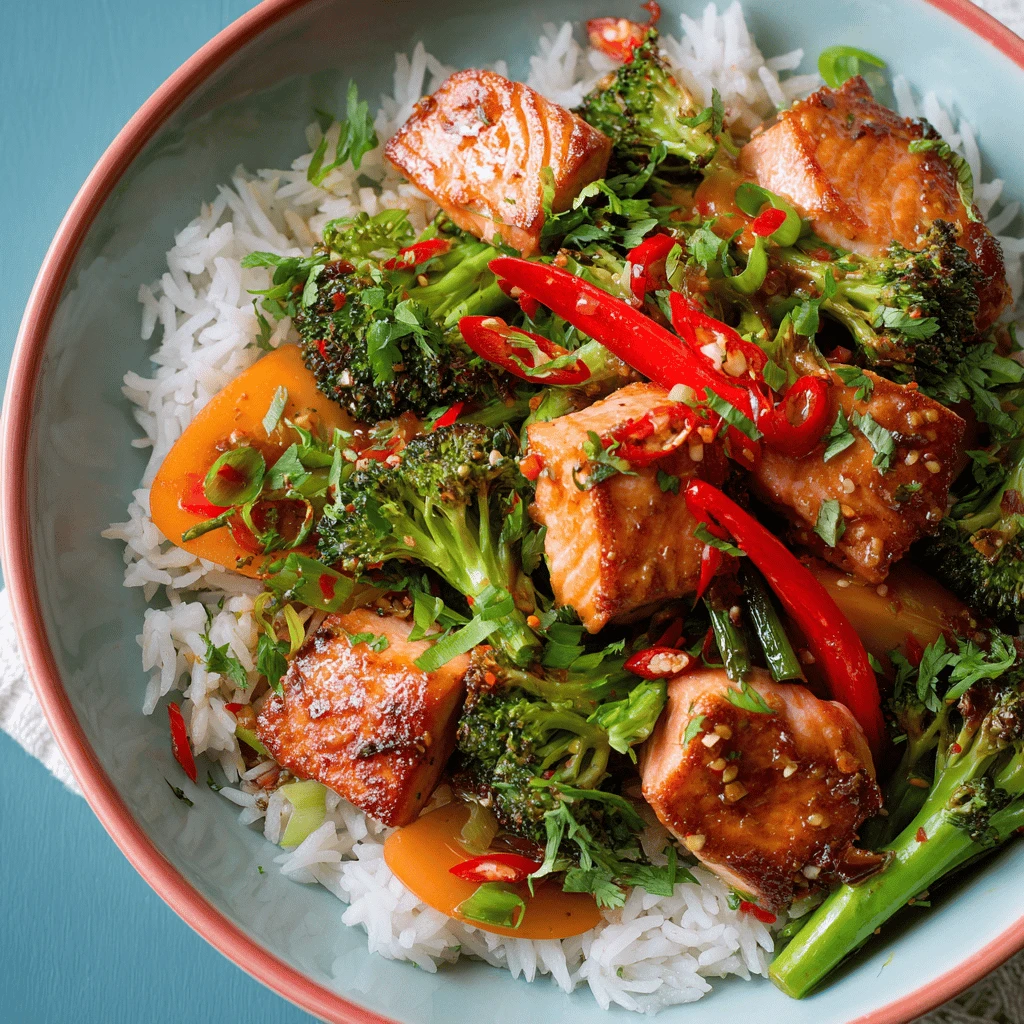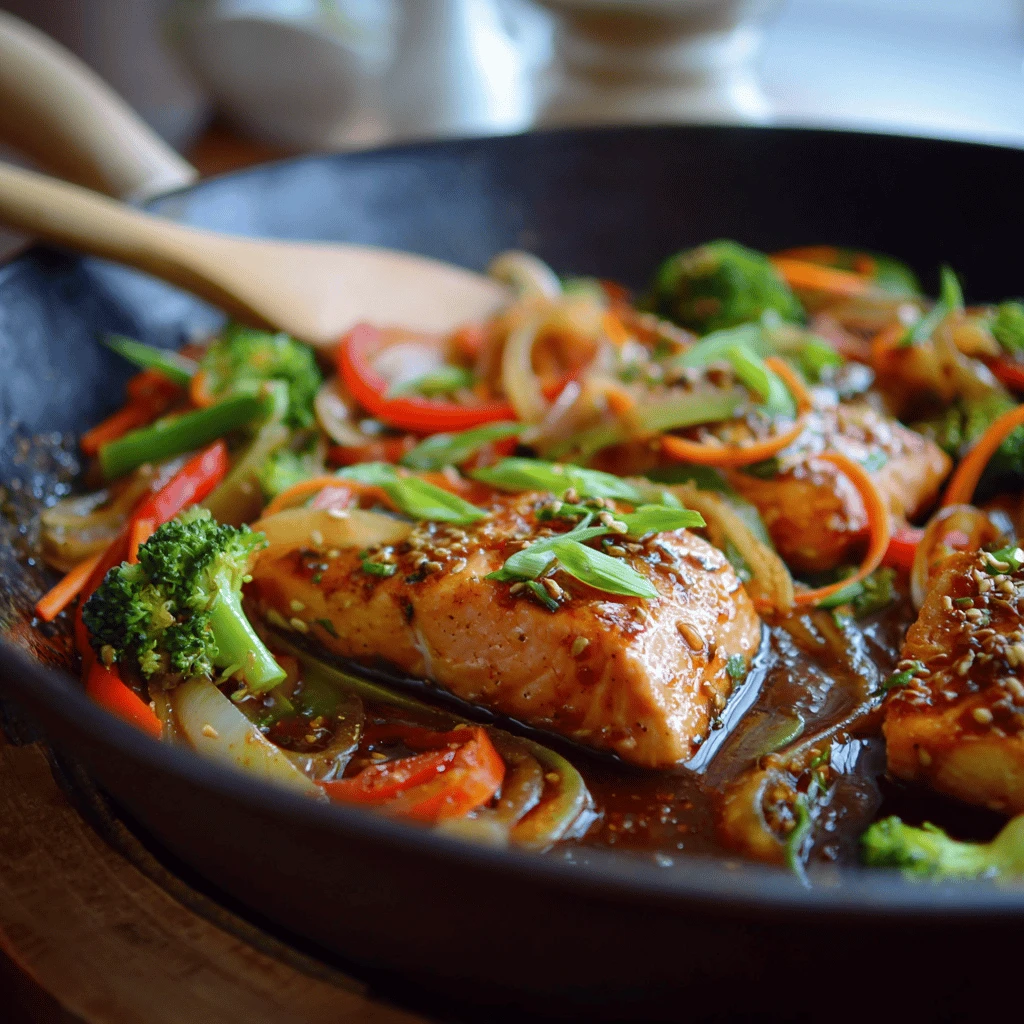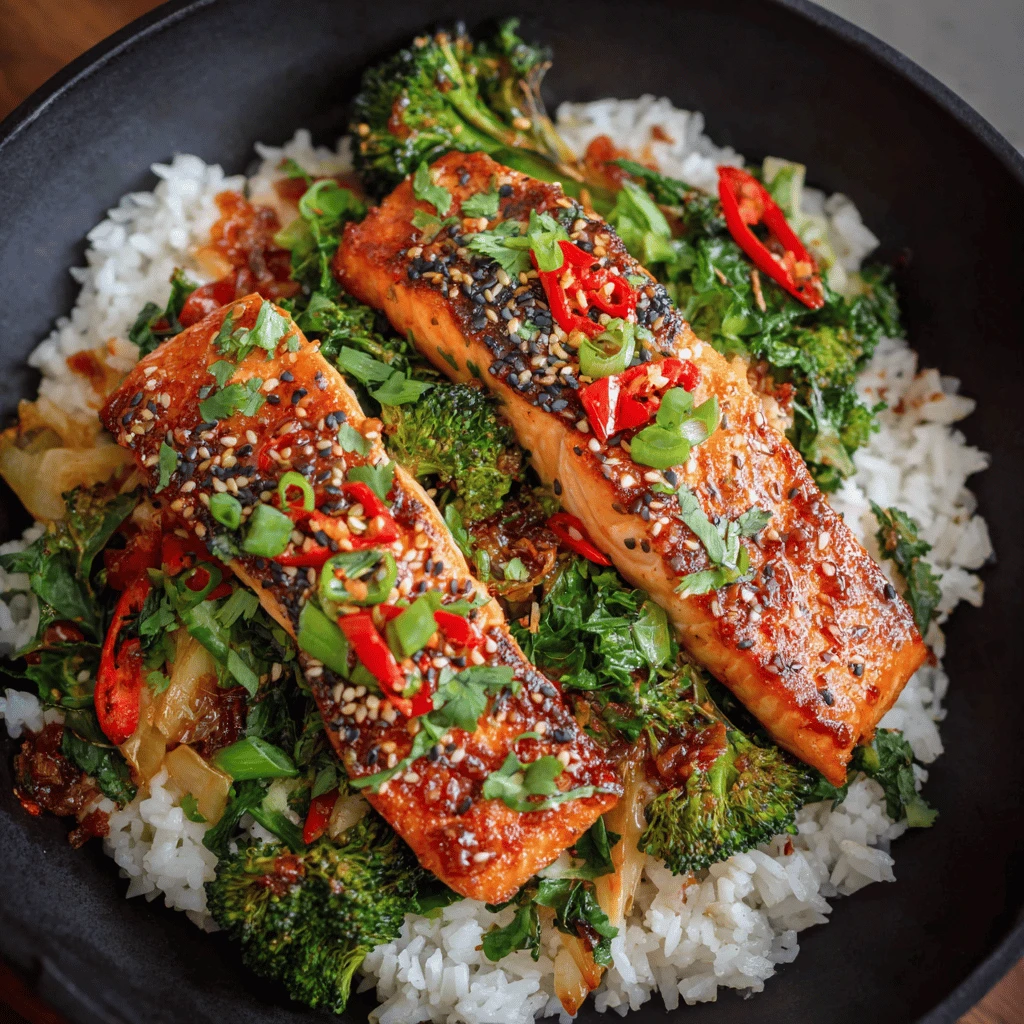Kid-Friendly Spicy Salmon Stir Fry
Introduction: A Flavorful Adventure for Little Palates
Getting kids to eat healthy, and especially fish, can feel like a Herculean task. But what if you could transform a nutritious ingredient like salmon into a dish that’s not only acceptable but genuinely enjoyed? Enter the kid-friendly spicy salmon stir fry! This recipe is all about balance, offering a tantalizing flavor profile that’s customizable to suit even the pickiest eaters. The secret lies in controlled spice levels, delicious sauces, and colorful vegetables, all coming together in a quick and easy stir fry. Prepare to embark on a culinary adventure that will have your children asking for seconds.
Mastering the Art of Kid-Friendly Spice
Spicy food and kids don’t always go hand-in-hand. The key to success is understanding how to introduce heat gradually and subtly. Rather than blasting their taste buds with intense chili, we’ll focus on layering flavors to create a warm, inviting sensation.
Choosing the Right Spice Source
For a gentle kick, consider using ingredients like:
- Ginger: Freshly grated ginger adds a warm, aromatic spice that’s less intense than chili.
- Garlic: Adds depth of flavor and complements other spices beautifully.
- Smoked Paprika: Offers a smoky, sweet heat that’s very palatable.
- A Pinch of Chili Flakes: Used sparingly, chili flakes can provide a subtle warmth. Opt for mild varieties and add them gradually, tasting as you go.
- Sriracha (Optional): A tiny dot of Sriracha can add a vinegary, slightly sweet heat. It’s best to add this to individual portions for older kids who enjoy a bit more spice.
Controlling the Heat Level
- Start Small: Always begin with a minimal amount of spice. You can always add more, but you can’t easily take it away.
- Taste and Adjust: Continuously taste the stir fry as you’re cooking and adjust the spice levels accordingly.
- Offer a Cooling Element: Serve the stir fry with a side of yogurt, sour cream, or avocado to provide a cooling contrast to the spice.
- Separate Spicy and Mild: If you have children with varying spice preferences, consider cooking the stir fry without any chili initially. Then, divide the dish and add a touch of chili to the portions for those who enjoy a bit of heat.
Crafting the Perfect Salmon Stir Fry
Now that we’ve addressed the spice factor, let’s dive into the core of the recipe. The perfect kid-friendly salmon stir fry hinges on fresh ingredients, flavorful sauces, and proper cooking techniques.
Selecting the Best Salmon
- Fresh is Best: Whenever possible, use fresh salmon fillets. Look for bright pink flesh with no fishy odor.
- Skin On or Off?: This is a matter of preference. Skin-on salmon tends to be more flavorful, but some kids may not like the texture. You can remove the skin before or after cooking.
- Wild vs. Farmed: Wild salmon is generally considered healthier and more flavorful, but it can be more expensive. Farmed salmon is a more budget-friendly option and is still a good source of omega-3 fatty acids.
- Cut into Bite-Sized Pieces: Cut the salmon into small, even-sized pieces to ensure that it cooks quickly and evenly.
Choosing Your Veggies Wisely
Color is key when it comes to enticing kids to eat their vegetables. Aim for a variety of colorful options:
- Broccoli: Adds a vibrant green and a slightly bitter flavor that complements the salmon well.
- Carrots: Provide sweetness and a satisfying crunch.
- Bell Peppers: Come in a rainbow of colors and offer a mild, slightly sweet flavor.
- Snow Peas: Add a delicate sweetness and a crisp texture.
- Edamame: Offers protein and a slightly nutty flavor.
- Mushrooms: Sliced thinly, mushrooms contribute an earthy flavor and a meaty texture.
- Zucchini or Summer Squash: Mild in flavor and readily accepts the stir-fry sauce.
Cut the vegetables into similar sizes to ensure even cooking.
The Magic of Stir Fry Sauce
The sauce is what brings the entire stir fry together. A well-balanced sauce will enhance the flavors of the salmon and vegetables and make the dish irresistible.
A simple yet delicious stir fry sauce can be made with:
- Soy Sauce (Low Sodium): Provides a savory, umami flavor. Use low-sodium to control the salt content.
- Honey or Maple Syrup: Adds sweetness to balance the saltiness of the soy sauce.
- Rice Vinegar: Provides a tangy, acidic note that brightens the flavors.
- Sesame Oil: Adds a nutty aroma and flavor. Use sparingly, as it can be quite potent.
- Cornstarch: Thickens the sauce, giving it a glossy sheen.
- Ginger and Garlic (Minced): Adds aromatic spice and depth of flavor.
Whisk all the sauce ingredients together in a bowl and set aside until ready to use.
Cooking it all Together: Step-by-Step
1. Prepare the Salmon: Cut the salmon into bite-sized pieces and pat them dry with paper towels. This will help them to sear properly.
2. Prepare the Vegetables: Chop all the vegetables into similar sizes.
3. Make the Sauce: Whisk together all the sauce ingredients in a bowl.
4. Stir Fry the Salmon: Heat a wok or large skillet over medium-high heat. Add a tablespoon of vegetable oil. Once the oil is hot, add the salmon and cook for 2-3 minutes per side, or until cooked through. Remove the salmon from the wok and set aside.
5. Stir Fry the Vegetables: Add another tablespoon of vegetable oil to the wok. Add the vegetables and stir fry for 5-7 minutes, or until they are tender-crisp.
6. Combine and Simmer: Add the cooked salmon back to the wok with the vegetables. Pour the stir fry sauce over the mixture and simmer for 1-2 minutes, or until the sauce has thickened and everything is heated through.
7. Serve: Serve the salmon stir fry over rice or noodles. Garnish with sesame seeds and chopped green onions, if desired.
Customization and Variations for Every Palate
One of the best things about stir fries is their versatility. Feel free to customize this recipe to suit your family’s preferences and dietary needs.
Dietary Adaptations
- Gluten-Free: Use tamari instead of soy sauce and ensure all other ingredients are gluten-free.
- Dairy-Free: This recipe is naturally dairy-free.
- Nut-Free: Omit sesame seeds for garnish.
- Low-Carb: Serve the stir fry over cauliflower rice or zucchini noodles.
Ingredient Swaps
- Protein: Substitute the salmon with chicken, shrimp, or tofu.
- Vegetables: Use any vegetables your family enjoys, such as snap peas, baby corn, or bok choy.
- Sauce: Experiment with different sauces, such as teriyaki sauce, peanut sauce, or sweet chili sauce.
Kid-Friendly Twists
- Noodle Power: Toss the stir fry with egg noodles or ramen noodles for a more substantial meal.
- Hidden Veggies: Grate vegetables like zucchini or carrots into the sauce for extra nutrients.
- Fun Shapes: Use cookie cutters to create fun shapes out of the cooked salmon.
- Deconstructed Stir Fry: Serve the components of the stir fry separately, allowing kids to build their own plates. This can be a fun and engaging way to encourage them to try new foods.
Serving Suggestions and Storage Tips
To make this kid-friendly spicy salmon stir fry a complete and successful meal, consider these serving suggestions and storage tips.
Serving Suggestions
- Rice or Noodles: Serve the stir fry over a bed of cooked rice (white, brown, or jasmine) or noodles (egg noodles, udon, or soba).
- Side Dishes: Accompany the stir fry with a side of steamed edamame, a simple salad, or spring rolls.
- Toppings: Garnish with sesame seeds, chopped green onions, or a drizzle of sesame oil for added flavor and visual appeal.
- Dipping Sauces: Offer a variety of dipping sauces, such as soy sauce, sweet chili sauce, or peanut sauce, to allow kids to customize their meal.
Storage Tips
- Refrigerate: Store leftover stir fry in an airtight container in the refrigerator for up to 3 days.
- Reheat: Reheat the stir fry in a skillet over medium heat or in the microwave until heated through.
- Freezing: While not ideal, you can freeze cooked stir fry for up to 2 months. However, the texture of the vegetables may change upon thawing.
Frequently Asked Questions (FAQ)
Q: Can I use frozen salmon?
A: Yes, you can use frozen salmon. Make sure to thaw it completely before cooking and pat it dry with paper towels to remove excess moisture.
Q: My child doesn’t like salmon. What else can I use?
A: You can substitute the salmon with chicken, shrimp, or tofu.
Q: How can I make this recipe less spicy?
A: Omit the chili flakes altogether. You can also reduce the amount of ginger and garlic.
Q: Can I add more vegetables?
A: Absolutely! Feel free to add any vegetables your family enjoys. Some good options include snap peas, baby corn, and bok choy.
Q: Can I prepare this dish ahead of time?
A: You can chop the vegetables and make the sauce ahead of time. However, it’s best to cook the salmon and stir fry the vegetables just before serving.
Q: What kind of rice is best for this dish?
A: White rice, brown rice, and jasmine rice all work well with this dish. Choose the type of rice that your family prefers.
Q: How do I prevent the vegetables from becoming soggy?
A: Don’t overcrowd the wok or skillet. Cook the vegetables in batches if necessary. Also, be sure to stir fry them over high heat to ensure they cook quickly and evenly.
Q: Is this recipe healthy for kids?
A: Yes, this recipe is packed with protein, healthy fats, and vitamins. It’s a great way to get kids to eat their vegetables and enjoy a nutritious meal.




